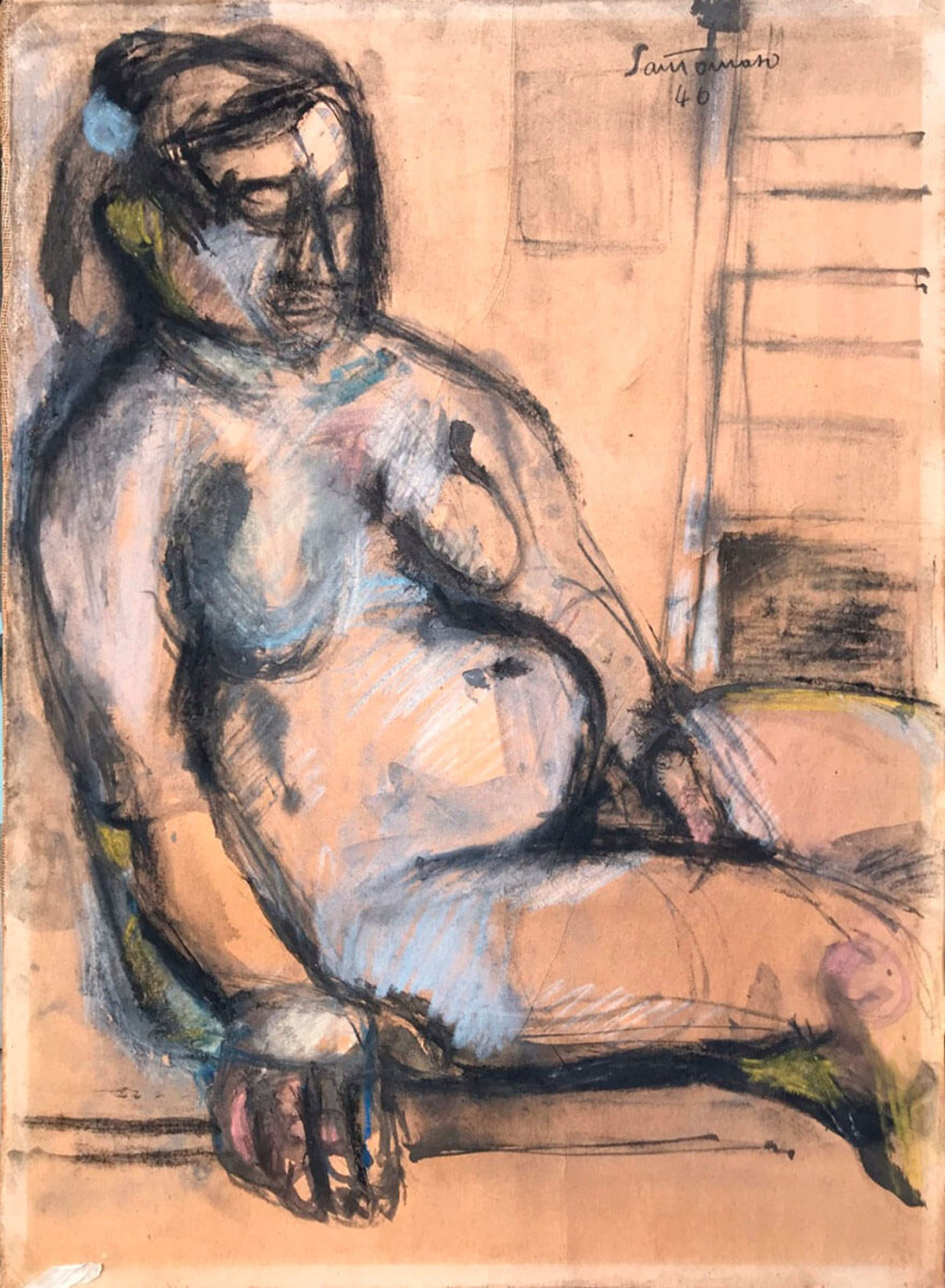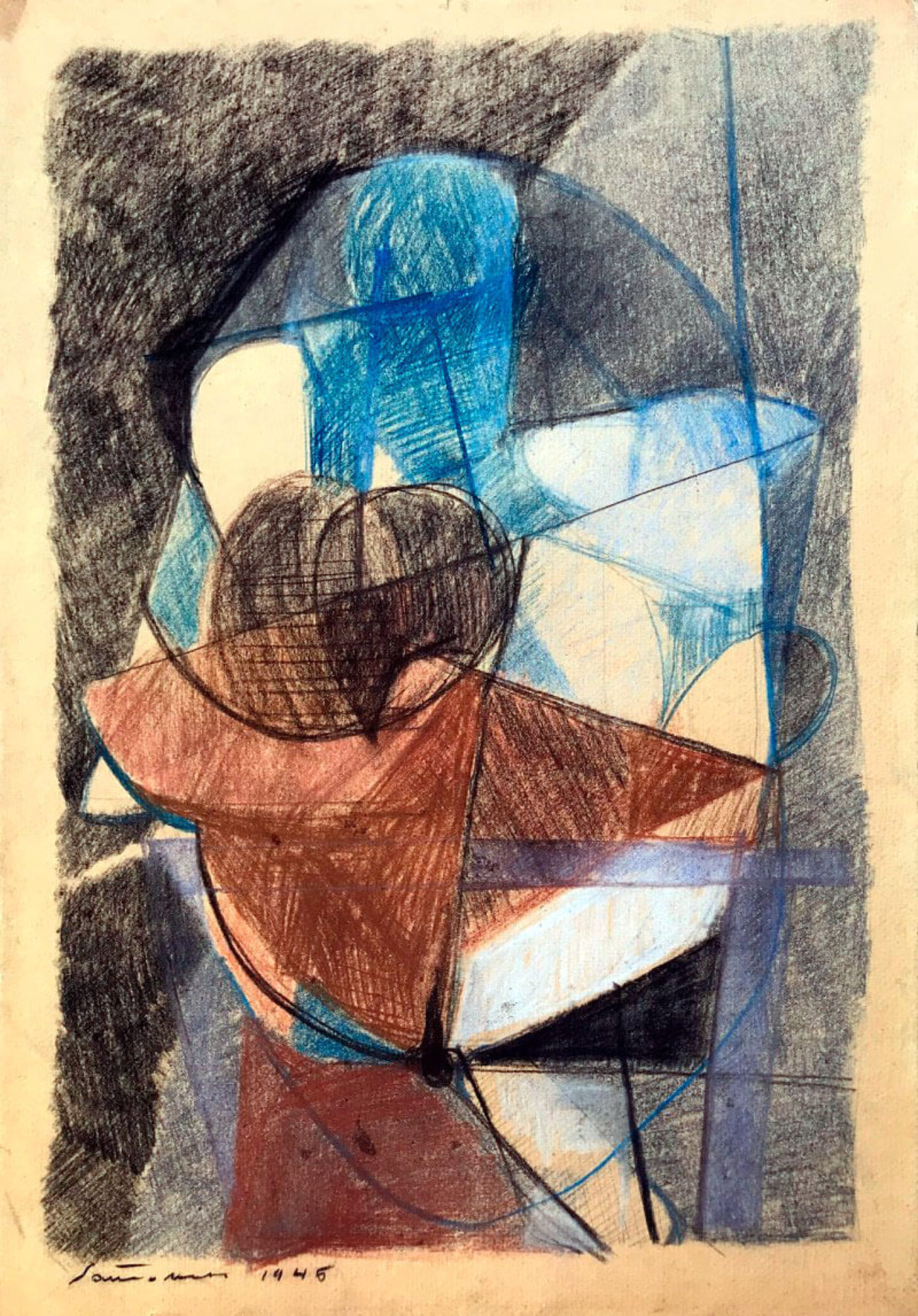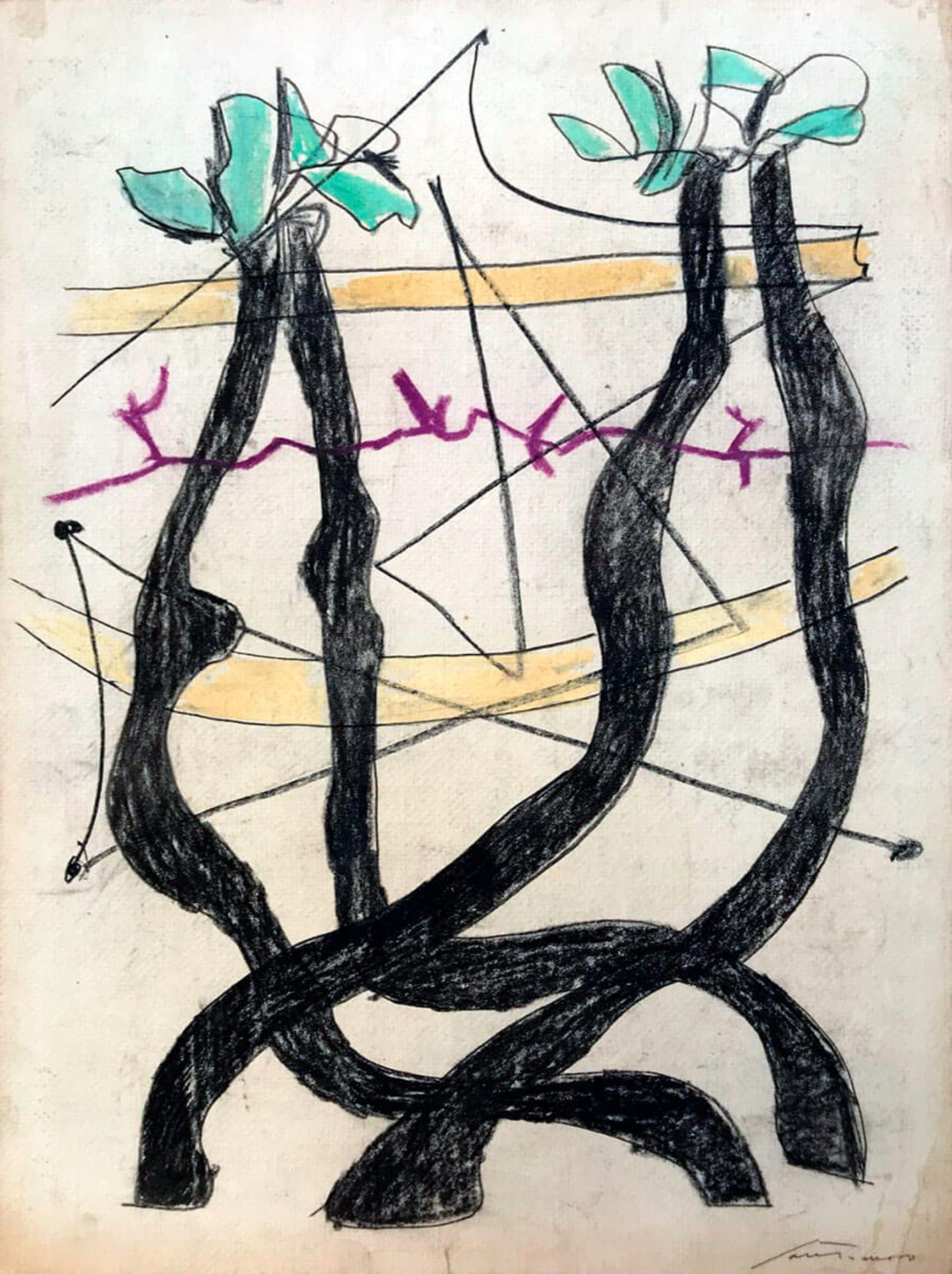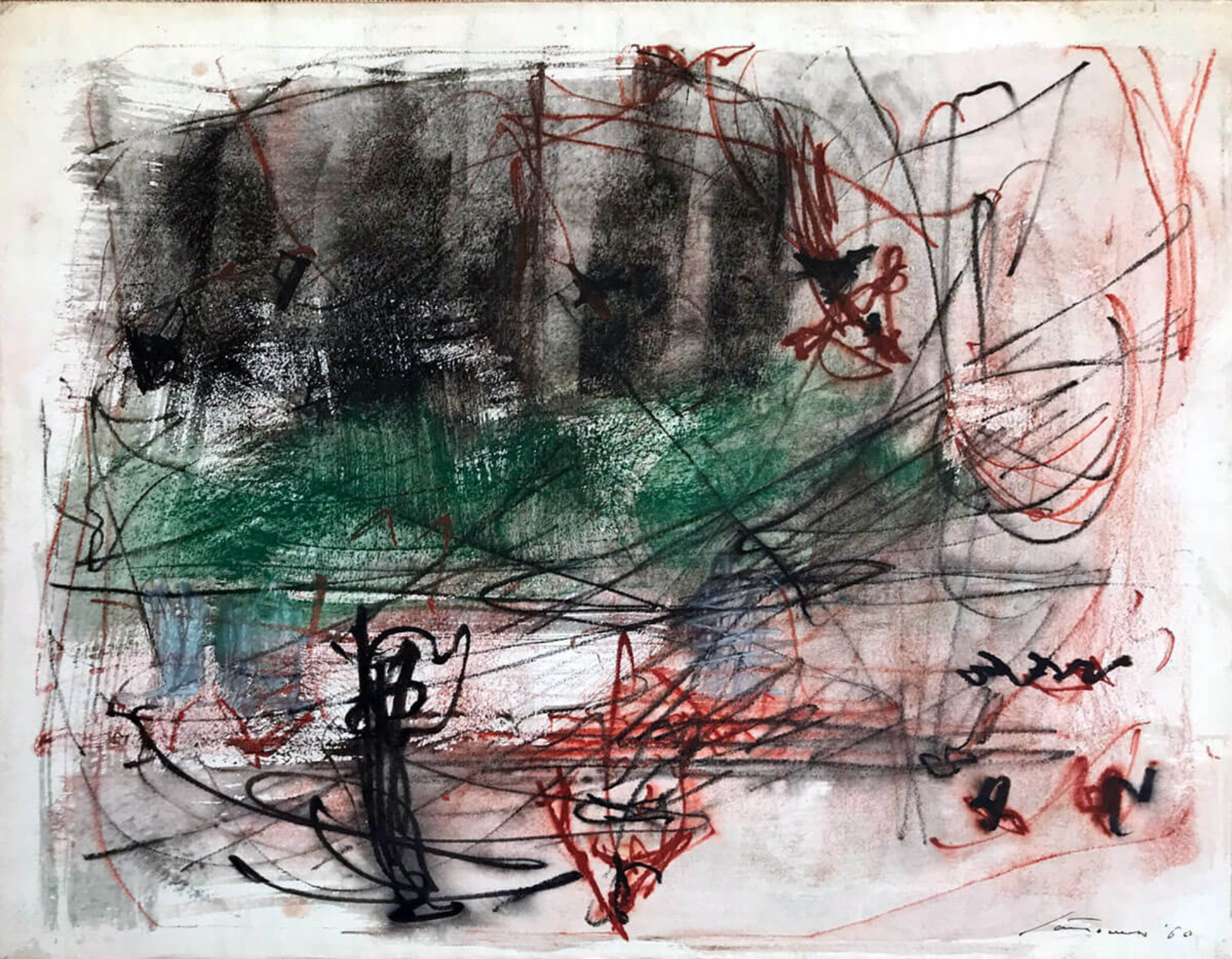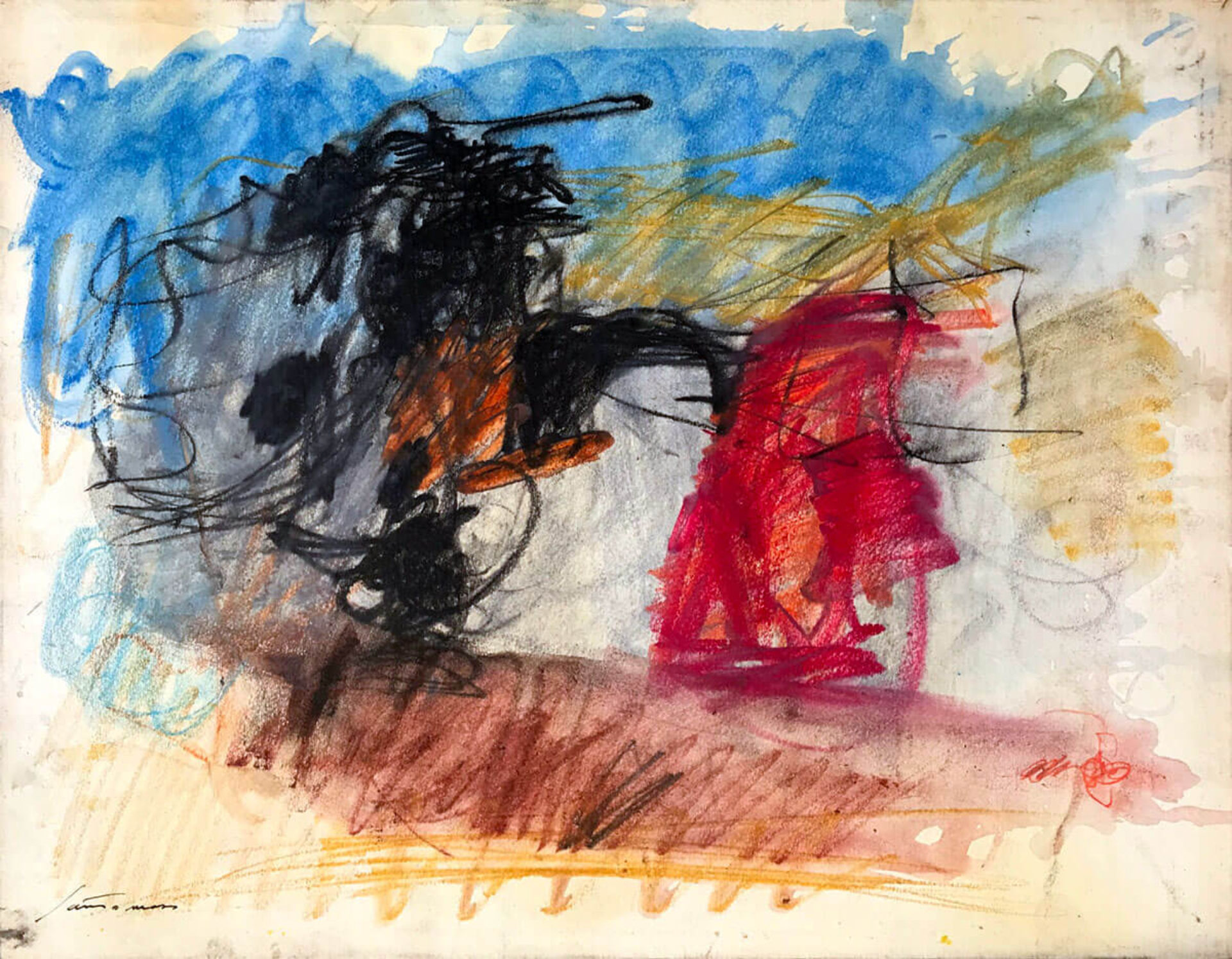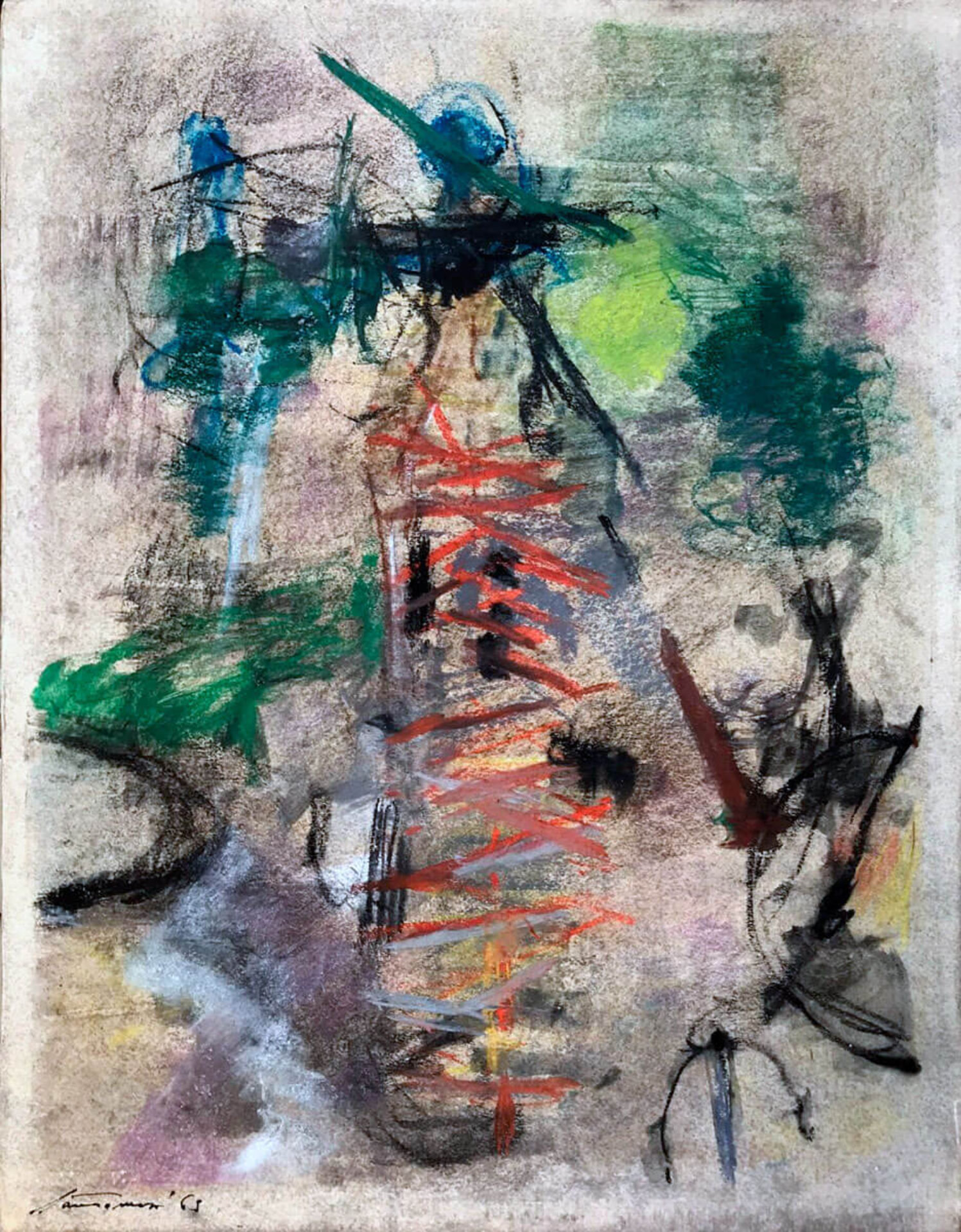Giuseppe Santomaso was born in Venice in 1907. He began his self-taught career, getting his training through Bevilacqua La Masa and Ca ‘Pesaro’s exhibitions. He enrolled in the Academy of Fine Arts attending basic painting lessons that brought him closer to the post-impressionist model in vogue at that time in Venice. He started moving away from the Lagoon tradition in 1937, the year of his travels to Paris and Amsterdam, where the artist let himself be inspired by the impressionist and fauve movements of Braque, Matisse and Picasso.

The 1940s saw the artist’s involvement as a founding member of the New Italian Artistic Secession and in 1946 of the New Front of the Arts together with Birolli, Cassinari, Guttuso, Mazzacurati, Pizzinato, Vedova, Leoncillo and Viani. Abandoning social issues he started painting abstract tensions and emotional figures. In 1952 he participated in the experience of the Group of Eight (Afro, Birolli, Corpora, Moreni, Morlotti, Santomaso, Turcato, Vedova), also called abstract-concrete. In 1954 he won the International Painting Prize at the Venice Biennale.
The 1940s saw the artist’s involvement as a founding member of the New Italian Artistic Secession and in 1946 of the New Front of the Arts together with Birolli, Cassinari, Guttuso, Mazzacurati, Pizzinato, Vedova, Leoncillo and Viani. Abandoning social issues he started painting abstract tensions and emotional figures. In 1952 he participated in the experience of the Group of Eight (Afro, Birolli, Corpora, Moreni, Morlotti, Santomaso, Turcato, Vedova), also called abstract-concrete. In 1954 he won the International Painting Prize at the Venice Biennale.
In 1956 he won the Graziano Prize at the Galleria del Naviglio in Milan and two years later the Marzotto Prize at the Valdagno International Exhibition of Contemporary Painting. In 1957 he took up the position of professor of painting at the Academy of Fine Arts in Venice and in the same year he had his first exhibition in the United States at the Grace Borgenicht Gallery.
The artist’s painting moved from the concrete abstract to the informal. His gradual passage towards a non-figurative painting placed him among the abstract artists. In the sixties, a new artistic attention emerged that went beyond the informal. His works of that period were characterized by an emotional and meditative detachment. In this new phase, Santomaso’s intervention was reduced to a few essential gestures, impressed on the surface of his paintings. The balance and harmony bond that accompanied the entire path of the artist – free from the constraints of the informal – matured into an image made of emotion and luminous suggestions.
From the pictorial eloquence of the 1950s, Santomaso moved to denying the act until, during the final phase of his artistic career, he reached a dimension of maximum aesthetic value through the minimum of expression. In this he identified the most suitable means for achieving this goal. An example was the cycle of Letters to Palladio exhibited at the Miró Foundation in Barcelona in 1979 and later on, in 1991 at the Peggy Guggenheim Collection in Venice.
The artist’s works have been exhibited as well as in Italy in Hamburg, Berlin, Amsterdam, New York, Barcelona, Frankfurt, Locarno making him an Italian leading artist on the international scene.
Giuseppe Santomaso died in Venice on 23 May 1990.
